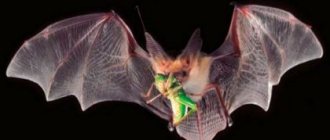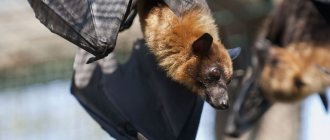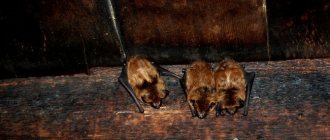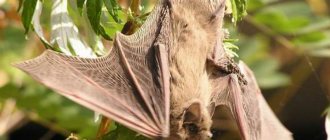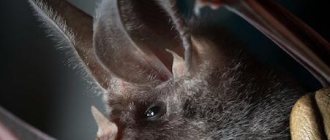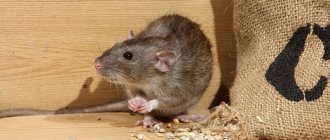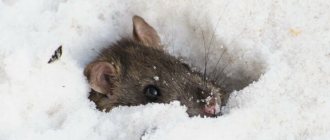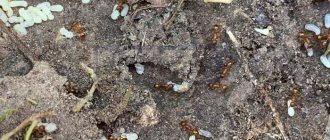Ecosystem protection has become an issue of great importance for human survival in recent years. Scientists from around the world say the extinction of some species of insects and animals, such as bees and bats, could threaten global food production. Much has already been written about the importance of bees in the ecosystem, but only a limited number of people realize that bats also play a significant role in the reproduction of plants and the preservation of the world's ecosystem. We decided to tell you what benefits bats bring to the environment and why it is so important for us to protect this species from extinction.
Like bees, bats also pollinate plants.
Bees, through the pollen they spread among flowers, account for approximately one-third of the world's pollination and contribute to the growth of fruits and seeds that feed humans and many animal species. However, according to 2018 research by Mexico's National Commission for the Protection of Natural Areas (CONANP) and the American Society for Bat Research (NASBR), bats are also specialized pollinators. The fact is that these flying mammals feed on nectar, and thus have direct contact with the reproductive parts of flowers.
Pisces are istihyphobes, Aquarius is claustrophobic: what phobias threaten the zodiac signs
Why 2022 will be better 2022: astrologers explained what we can expect
Chinese hotel with windows overlooking an enclosure with polar bears: photo
Types of bats: names and photos
Below are descriptions of some varieties of bats.
Pig Nose
The body length of adult individuals is only 3-4 cm. They are found in the southeastern regions of Asia. The front part of the muzzle is flattened and looks like a pig's snout.
Fruity
The second name of the animal is the epaulette fruit bat. Fruit mice live in Africa. They play a large role in the ecosystem of the continent, carrying the seeds of the fruits they eat over considerable distances. This species is known to transmit the Ebola virus.
Water bat
Belongs to the family of smooth-nosed mice. There are no cartilaginous growths on the animal's face. In winter, it goes into suspended animation. Lives in the temperate climate zone. You can distinguish it from its relatives by the reddish tint of its muzzle.
Two-tone leather
vespertilio murinus
Small bats whose range extends over a large area of Europe and Asia.
Brown long-eared bat
You can identify the animal by its very large ears: their length is equal to the length of the forearms. Before going to bed, the long-eared long-eared bat folds its ears on its back and covers them with its wings.
The sizes and weights of some representatives of the order are given below.
| Type name | Body length, cm | Weight, g |
| Maned Acerodon | 29 | 1200 |
| Spectacled flying fox | 24 | 800 |
| Egyptian flying dog | 17 | 400 |
| Great harelip | 13 | 80 |
| Great Spearman | 10 | 80 |
| Wide-eared folded lip | 9 | 50 |
| White leaf-nosed bat | 4 | 7 |
Horseshoe
They actively distribute seeds over vast distances
According to research conducted by a team of scientists from the National Herbarium of Bolivia, some species of bats are large seed dispersers. These animals consume huge amounts of fruit and then disperse the seeds over long distances as they move. During the flight of mice, seeds are distributed, which helps restore certain areas of deforested forests. For this reason, scientists propose using flying mammals to quickly restore forests.
Why do bats sleep upside down?
Maned Acerodon
When completing their flight, bats cling to branches or ledges on rocks and hang upside down. The need to take this position during rest and sleep is caused by the structural features of the skeleton: thin bones of the limbs do not allow bats to maintain their body weight on horizontal surfaces for a long time and push off from them during takeoff. When a mouse hangs, it only needs to unclench its claws and begin to fall, while simultaneously spreading its wings.
Bats are capable of controlling insect populations
According to a paper published by researchers from Mexico's National Commission for the Protection of Natural Areas, bats provide significant health and economic benefits because some species feed on harmful insects that can damage large agricultural areas and even carry diseases. Accordingly, the larger the bat population in a given region, the less pesticides can be used, which helps protect the environment.
“Wash twice”: the hairdresser named a common mistake when washing hair
What champignons look like that you shouldn’t eat: five signs of dangerous mushrooms
You can make original shelves from old belts and a couple of boards: an easy way
Unfortunately, many species of these beneficial animals have been harmed by human use of chemicals, causing their populations to plummet. Therefore, scientists from all over the world are sounding the alarm and asking for urgent measures to be taken to ensure the safety of these extremely useful animals.
Enemies in nature
Bats also have their own enemies, who in turn can hunt them. Usually these are birds of prey: peregrine falcons, hobby birds,
hawks, and also owls. A snake, marten and weasel will not mind grabbing a bat.
But the main enemy of bats (as well as many other animals) is, of course, humans. The use of chemicals in crop production has significantly reduced the number of bats; many of the species are already listed in the Red Book, as they are on the verge of extinction.
They serve as indicators of the "environmental health" of the region in which they live
There is a huge variety of bat species with great adaptability to different habitat conditions. These animals are found in both tropical forests and arid mountains. Such abilities, according to scientists, may force bats to respond to changes in the environment and adjust their habits depending on the level of change that the ecosystem may be subject to.
For example, the method these animals use to build their nests. There is a false belief that all bats live only in caves or tree hollows. Some species of these flying mammals build a tent-like structure out of leaves and branches on trees, which may indicate the level of ecosystem change. That is, they use the resources available to them to build their shelters and thus survive in any habitat. For example, in the absence of trees in deforested areas, they may nest in holes.
Where do bats live and what do they eat?
Despite the fact that in everyday life most people (especially city dwellers) practically do not encounter bats and, as a rule, know almost nothing about them, bats make up approximately a quarter of the world’s mammal fauna and have long lived next to us.
Absolutely all representatives of this suborder Chiroptera, living in the European part of Russia, are completely harmless to humans and feed exclusively on insects, playing an important role in natural ecosystems, hunting in the dark and destroying pests of forests, fields, parks, gardens and vegetable gardens, as well as carriers of pathogens of dangerous diseases. And the animals eat a lot - the metabolism of bats is very intense, often the amount of food eaten per day is approximately half of its own body weight.
Small and medium-sized bats fly at speeds of 10 to 50 km/h while searching for prey.
What bats can you spot in your area? There are several species of them in our latitudes - usually they are small animals of brown, gray, red or brown color with a lighter belly and leathery membraned wings, “stretched” over thin and very long paw bones. They have funny “wrinkled” faces with small eyes and large or very large ears of complex shape.
Vision in bats is poorly developed, but exceptionally fine hearing in the range from 12 to 190,000 Hz is their “pride”. The mice themselves are also quite “talkative” - people with good hearing can easily hear their communication - tinkling and squeaking. In addition, if necessary, bats detect objects blocking their path, emitting abrupt ultrasounds, inaudible to humans, and picking up their echoes reflected from objects (echolocation).
Echolocation allows bats to control their flight altitude, maneuver in dense forests, find their way to shelter, and confidently pursue prey. Moreover, each species of these animals emits a signal on its own wavelength - they differ in the same way as the singing of birds.
By the way, about the songs that we mentioned at the beginning of the article - complex ultrasonic songs have actually been discovered in bats, which are performed for different purposes: when a male is courting a female, to recognize each other, to indicate social status, to determine the boundaries of a territory and to resist strangers, raising young ones.
These songs are reminiscent of birds, and among mammals, bats are the only ones other than humans that use such complex vocal sequences to communicate.
Almost all bats are nocturnal and sleep during the day, hanging upside down, in secure shelters. They do this because, due to the special fragile structure of their bones, the animals are completely defenseless on the ground and cannot move on their paws, pushing off from it. In addition, this position allows them to begin flight directly during the “fall.”
In winter, some bats migrate to warmer regions, while others fall into long-term seasonal hibernation (up to 8 months).
Bats live long enough for such small animals - 15-40 years. They mate in the fall, and in the spring the females give birth to 1-2 cubs.
The only danger to humans that these animals can pose is the transmission of the non-classical rabies virus and the fungus that causes histoplasmosis (a respiratory tract disease). To become infected with rabies, a mouse must bite you hard (which is generally not typical for them; even when sick, they, unlike all other carriers of the virus, do not rush at all living things, but, on the contrary, fall into apathy). To become infected with the fungus, you will have to inhale the crushed excrement of these animals, where the spores live. But let’s say right away that a person is much more likely to get this fungus from birds, both domestic and the ubiquitous wild birds (for example, starlings), in whose droppings it also reproduces well.
Bats produce fertilizer
As we wrote above, mice are specialized plant pollinators and can distribute seeds throughout their habitat. However, in addition to the important function of reforestation, they simultaneously fertilize the soil along their entire flight path. The fact is that the feces of these useful animals contain huge amounts of nitrogen, phosphorus, and other nutrients, which, together with potassium, make up the basic formula of fertilizers.
Found a violation? Report content
The danger of “neighborhood” with a person
Bats are difficult to classify as pests. They feed on insects and live in hard-to-reach places. Flyers have virtually no contact with humans, but at the same time bring significant benefits. By destroying insects, they protect crops from attack by pests. And by eating midges and mosquitoes, they protect people from unpleasant and painful bites.
But if these valuable “helpers” settle next to the apartment, they can seriously disturb not only the peace, but also cause significant harm.
- Lack of silence. Night “guests” make a rather unpleasant squeak. The flapping of the wings is accompanied by characteristic claps. All these rustling noises occur at night, so you will have to forget about a restful sleep for a while.
- Chance of being bitten. Bats practically do not bite. But if you disturb the colony, irritate the animal, or unsuccessfully catch an individual that accidentally flew into your house, you may feel a very dangerous bite on yourself. Mice do not bite painfully because their saliva contains an analgesic component. However, the bite can lead to serious problems.
- Spread of infection. Bats can become carriers of many diseases dangerous to humans. They themselves do not suffer from these infections, since they are able to increase their body temperature, thereby activating the immune system. Doctors warn that uninvited “neighbors” can infect a person with Ebola fever, SARS, Marburg virus, hemorrhagic fever, rabies and other pathologies.
- Litter. Bat feces are contaminated with histoplasmosis. The droppings emit vapors that penetrate the human body. The fungus can lead to the development of serious pathologies of the respiratory system.
Reproduction and raising of offspring
On average, baby bats become sexually mature at one year of age. They are ready to mate and procreate the very next year after birth.
Mating season
The mating season depends on the habitat of winged mammals.
Tropical varieties reproduce twice per season. Residents of temperate latitudes organize mating games in the fall before hibernation.
Duration of pregnancy and childbirth
After mating, the sperm “freeze” and remain throughout the winter. In early spring, they “awaken” and fertilize the egg. The timing of gestation depends on temperature and climate. The warmer it is, the faster the embryo will develop. On average, the duration of pregnancy is from 25 to 40 days.
Babies are born blind, deaf and naked. The weight of mice in some species does not exceed 1g.
The number of cubs in a litter is from 1 to three and depends on the species. For example, ordinary long-eared bats give birth to one baby at a time; leather bats or bats can give birth to 1 to 2 babies. And in litters of hairy tails there can be 3 mice.
Caring for the Cubs
After birth, babies feed on mother's milk and grow very quickly.
By the end of the first week, the weight of the pups doubles, and the body is completely covered with fur. In the second week, their eyes open and hearing appears.
Bats are caring mothers even when the babies grow up. take them with them hunting. The cubs cling to the mother's fur and accompany her on flights, but do not take part independently. Within a month they can hunt next to their mother’s nest.
Ways to drive away animals
Regardless of whether you are faced with a single uninvited guest or are trying to conquer your own attic from bats, do not forget that these animals can be listed in the Red Book. Therefore, chemical or folk poisons have no place here. You must create such conditions so that the “guests” fly out of the apartment on their own.
Random guest
If you encounter a flying animal in your room, do not panic. The random guest is very confused herself. Finding herself in an unfamiliar environment, she will try to find a way out. And you need to help her a little. Follow three steps to remove a bat from your home.
- Clear the room. Remove children and pets from the room.
- Open the window. Turn on bright lights in the room, pull back the curtains and open the windows wide.
- Leave the room. Close the door behind you, and you can safely return in five to ten minutes. The bat will fly out during this time.
Fighting a massive invasion
If you are dealing not with one individual, but with an entire colony, then you need to act differently. Only the “tenants” need to be evicted closer to autumn, when the females feed all the young. If you drive out mice in the summer, you will doom the kids to a painful death, and turn your balcony or attic into a real breeding ground for infection. Therefore, put up with rustling and squeaking at night. Get into the fight this fall with these four steps.
- Surveillance. At night, carefully monitor through which cracks and loopholes the bats get out.
- Examination. When the entire flock leaves the home, carefully inspect the room again so that not a single animal remains in it.
- Repair. Now carefully seal all holes, cracks, loopholes using fiberglass, metal gratings, and sealants.
- Cleaning. Complete the procedure with general cleaning of the room using white, Domestos.
Repellents
If the expulsion procedure does not end in victory, pay attention to numerous methods that can scare away uninvited guests. They allow you to get rid of bats forever, but do not harm endangered animals. Four drugs are most effective.
- Naphthalene. You can drive out mice using mothballs. Place the substance in bags and hang it in different places. The specific smell will completely repel the animals. It is necessary to change naphthalene periodically. It works as long as it continues to smell. Despite its high efficiency, the method can only be used in non-residential premises. Naphthalene vapors are dangerous to humans and pets.
- Water. A simple way to get rid of mice is to take a shower. Point the hose at surfaces that attract “guests” and spray them with cold water. This will get rid of bats, but, unfortunately, not forever. The animals will calmly return to their places as soon as you dry out the garage or shed.
- Aerosol 876 4-Pack Bat Repellent. If you prefer to fight with industrial means, then pay attention to this drug. It contains peppermint oil. When working with the spray, you must take special care so that, along with repelling mice, you do not provoke intoxication in yourself or your pets.
- Ultrasonic repeller. This is another method that allows you to drive away bats without harming them. Such devices emit special signals that humans cannot hear. But this sound is perfectly captured by the “guests”. They cannot put up with such discomfort, so they quickly leave your walls.
There are other, less effective methods. For example, a smoker. But be prepared for the fact that you will have to smoke for at least three to four days. Mice are afraid of light and fans. But you are unlikely to like this procedure. A roaring fan and a bright spotlight are not at all conducive to good sleep. And the amount charged for electricity consumption is unlikely to please anyone.
Did you know?
- Bats are the only mammals that can fly.
- The smallest bat is the bumblebee mouse from Thailand with a body length of 29–33 mm and a body weight of 2 grams.
- The largest representative of the order is the giant flying fox, which lives on the islands in the South Pacific Ocean. Its body length reaches 40 cm, and its weight is 1.1 kg.
- The Mexican bat is the fastest species of bat, flying at speeds of up to 160 km/h!
- Because bats eat masses of insects whose exoskeletons are made of chitin, their feces glow in the dark.
- Bats can eat up to 1,200 mosquitoes in an hour.
- Up to 70% of the pallid bat's diet consists of scorpions. They are immune to the stings of even the most poisonous scorpion!
- Guano is bat droppings. This is one of the most enriched fertilizers.
There are two main types of bats
Bats are divided into microbats (Microchiroptera) and megabats (Megachiroptera). The former can weigh less than a coin, while the latter have a wingspan that can reach 1.5 meters!
Photo: James Wainscoat
Most bats are microbats that eat nocturnal insects such as moths. Vampire bats are the only microbats that feed on blood rather than insects. But don't worry - they prefer to drink the blood of cattle rather than humans.

